Frederick Horniman’s insect collections contains around 4,700 butterflies, 2,000 beetles and approximately 500 specimens belonging to other groups of insects.
Butterflies
This is the Horniman swallowtail butterfly, discovered in Frederick Horniman’s collection and named in honour of him.
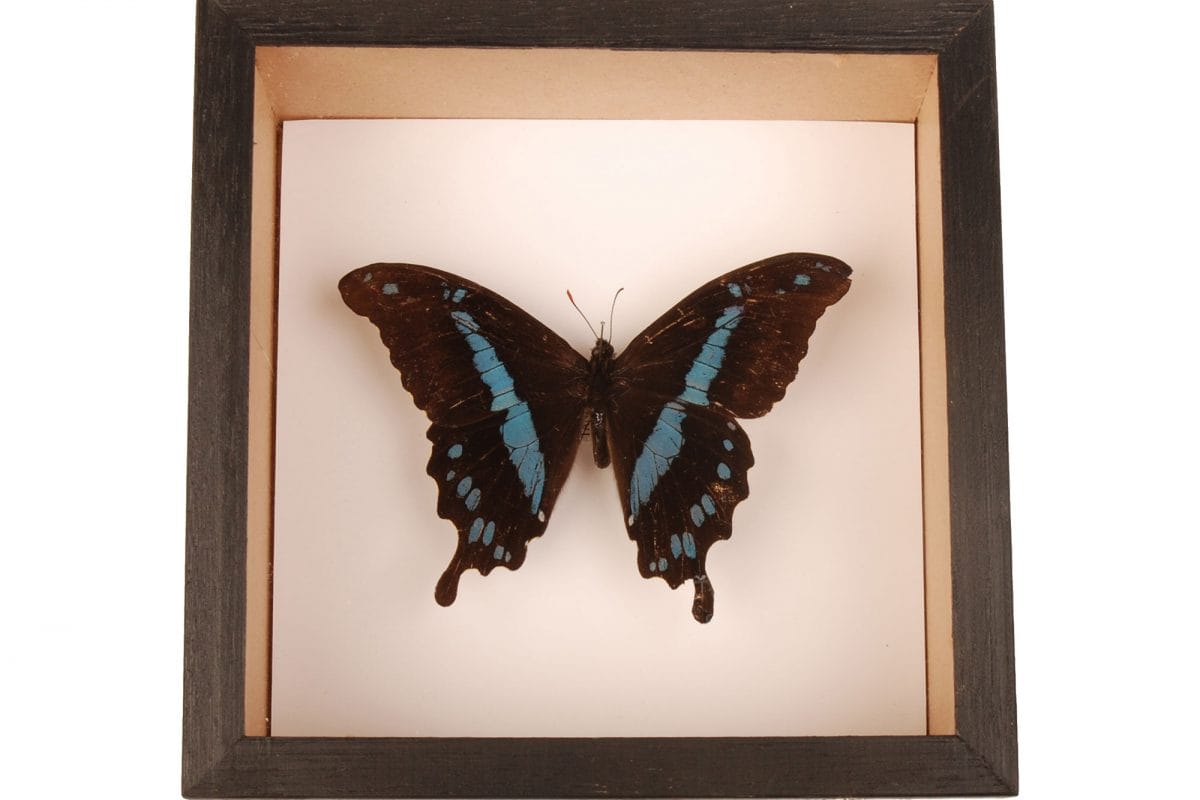
Tropical butterflies were highly desired by Victorian collectors who wanted to add spectacular specimens to their collections.
This drawer shows examples of the Miranda Birdwing, Malay Birdwing and Southern Birdwing from India and Indonesia.
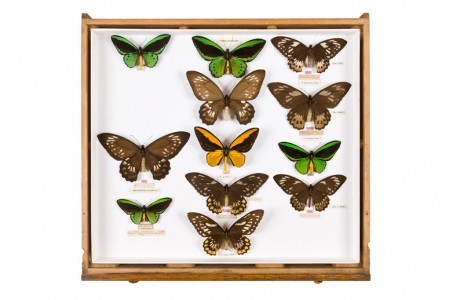
Birdwings
The Birdwings are some of the largest butterfly species on Earth. They are found across South and Southeast Asia and all the way into Australia. Brightly coloured specimens like these are popular with collectors.
Males of some species, like the Green Birdwings seen here, are very brightly coloured compared to females.
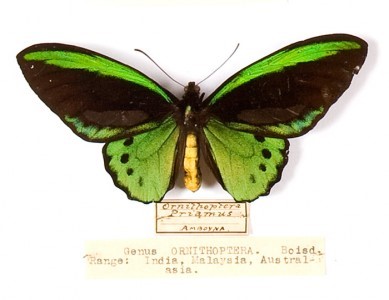
Beetles
It’s not just butterflies that have the Horniman name. This is a Horniman Beetle, and it comes from from Cameroon, West Africa. It was named new to science by Henry Walter Bates in 1877. Henry was a famous explorer and naturalist, most renowned for his travels in the Amazon.
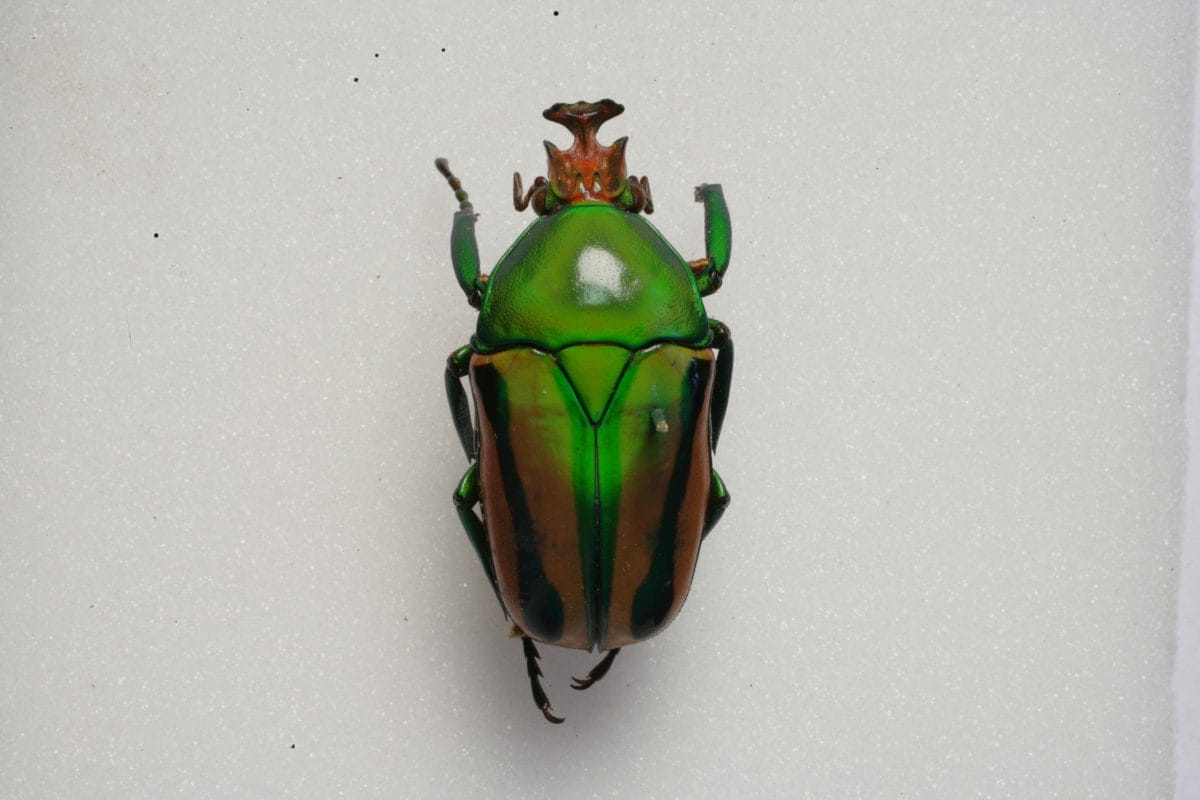
Jewel beetle
Jewel Beetles like these, are often brightly coloured, with some species having a metallic sheen that makes them popular with collectors. They are one of the largest families of beetles with tens of thousands of species known worldwide.
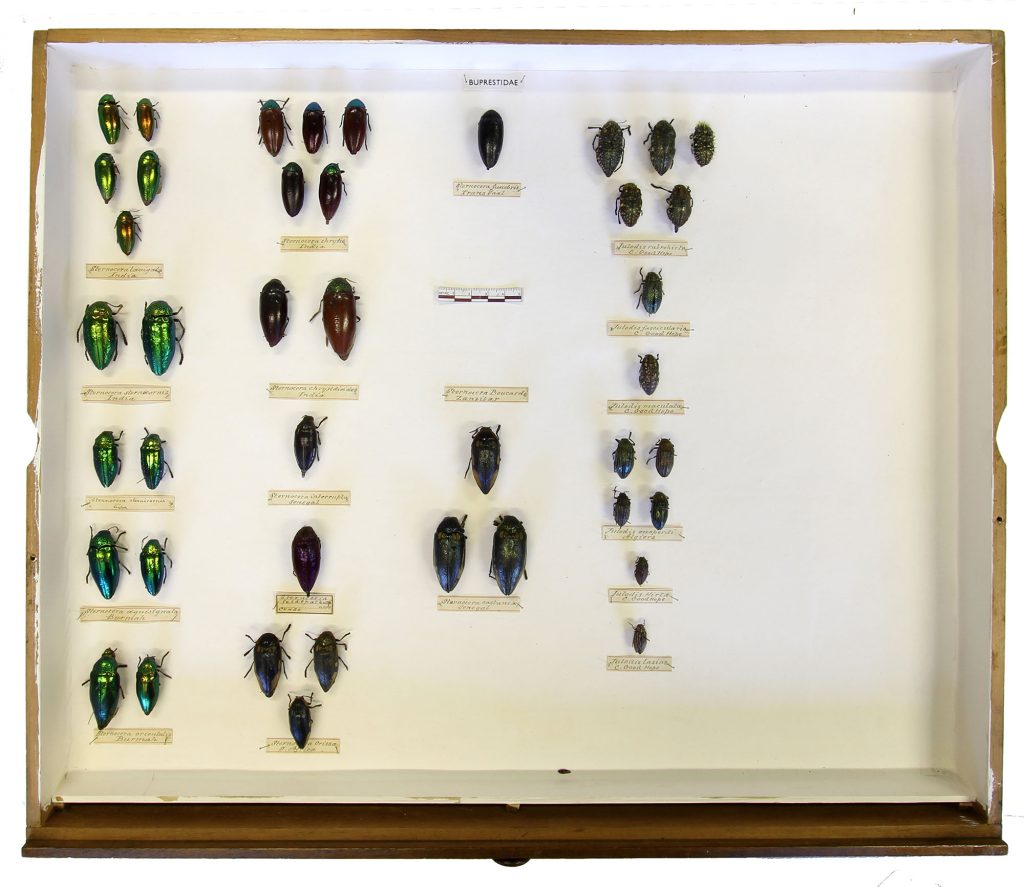
Jewel beetles are sometimes used in body adornments, like jewellery
The brightly-coloured wing cases of Jewel Beetles can be used to make decorative items like necklaces and other body adornments. You can see some of them in the World Gallery, like this leg ornament.
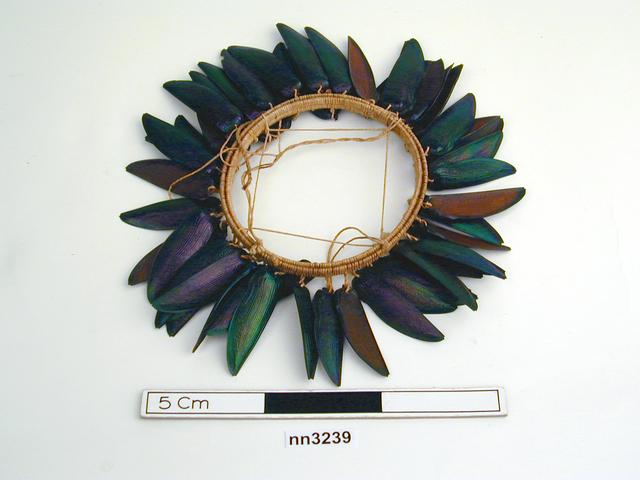
leg ornament
Anthropology
Goliath beetle
This drawer contains specimens of the Goliath Beetle, a type of scarab, and one of the largest insects on the Earth. These specimens were collected more than 100 years ago in West Africa.

Harlequin beetle
The Harlequin Beetle is a large tropical longhorn – a type of beetle with long antennae – from the Americas. These would have been star specimens in Frederick Horniman’s collection.
Harlequin beetles mostly live on trees, feeding on sap. The females lay their eggs on the trunks of dead or dying trees. Males have extremely long forelegs which are used in fights with other males and to guard females and good egg-laying sites.
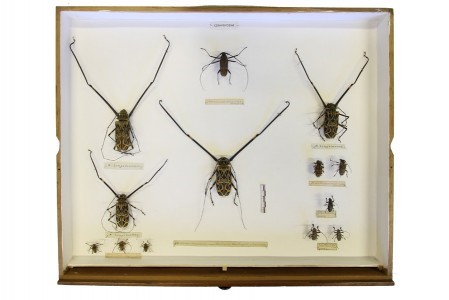
Cicadas
These strange looking creatures are not butterflies but cicadas. These fantastic specimens were collected around the world in places as far afield as India and South Africa.
Cicadas are best known for the loud ‘songs’ which are produced by the males to attract females. Special organs on the insects’ body rapidly vibrate to make the sound.
This entomological collection can tell us a lot about the history of insect collections, and about Frederick Horniman’s desire to understand and study the natural world.


